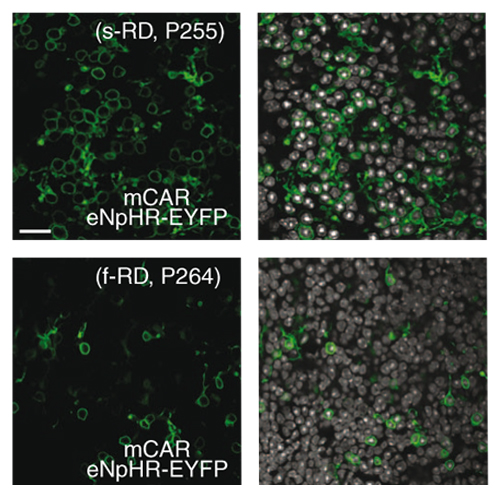Genetic Reactivation of Cone Photoreceptors Restores Visual Responses in Retinitis Pigmentosa
24-Jun-2010
Retinitis pigmentosa refers to a diverse group of hereditary diseases that lead to incurable blindness, affecting two million people worldwide. As a common pathology, rod photoreceptors die early, whereas light-insensitive, morphologically altered cone photoreceptors persist longer. It is unknown if these cones are accessible for therapeutic intervention. Here, we show that expression of archaebacterial halorhodopsin in light-insensitive cones can substitute for the native phototransduction cascade and restore light sensitivity in mouse models of retinitis pigmentosa. Resensitized photoreceptors activate all retinal cone pathways, drive sophisticated retinal circuit functions (including directional selectivity), activate cortical circuits, and mediate visually guided behaviors. Using human ex vivo retinas, we show that halorhodopsin can reactivate light-insensitive human photoreceptors. Finally, we identified blind patients with persisting, light-insensitive cones for potential halorhodopsin-based therapy.











